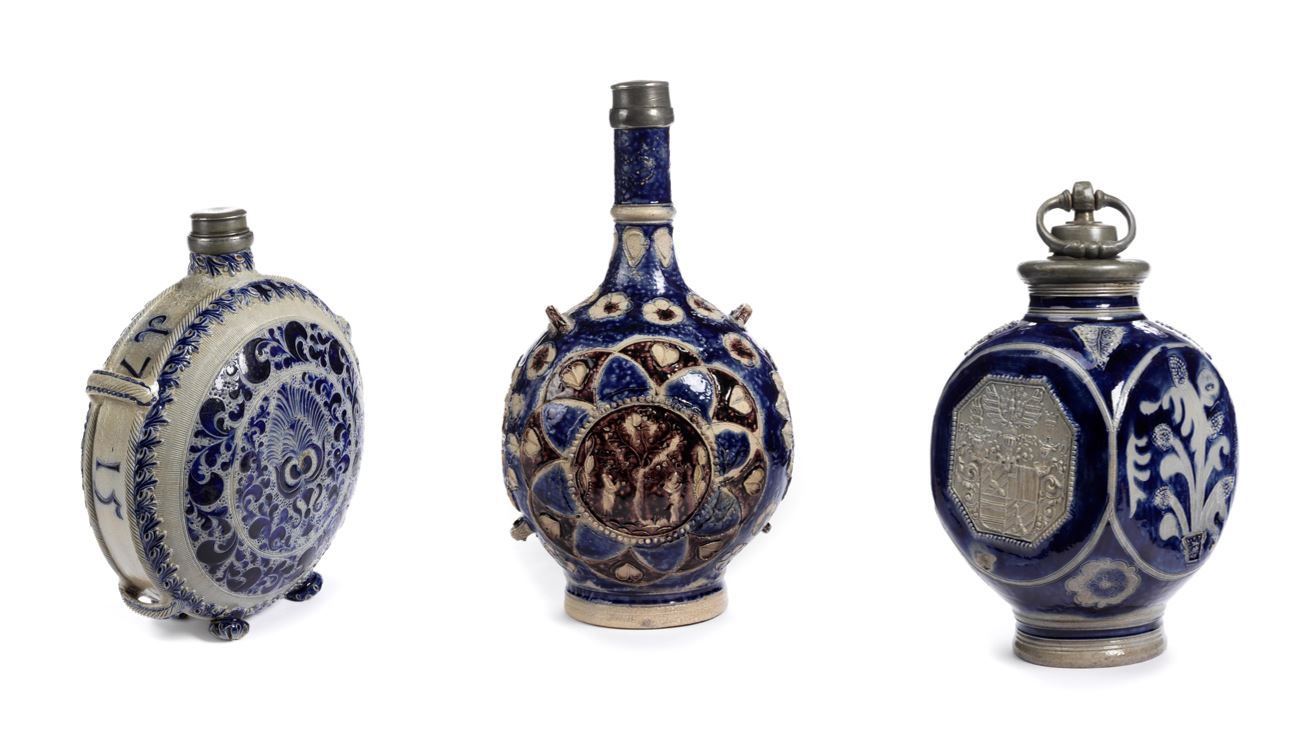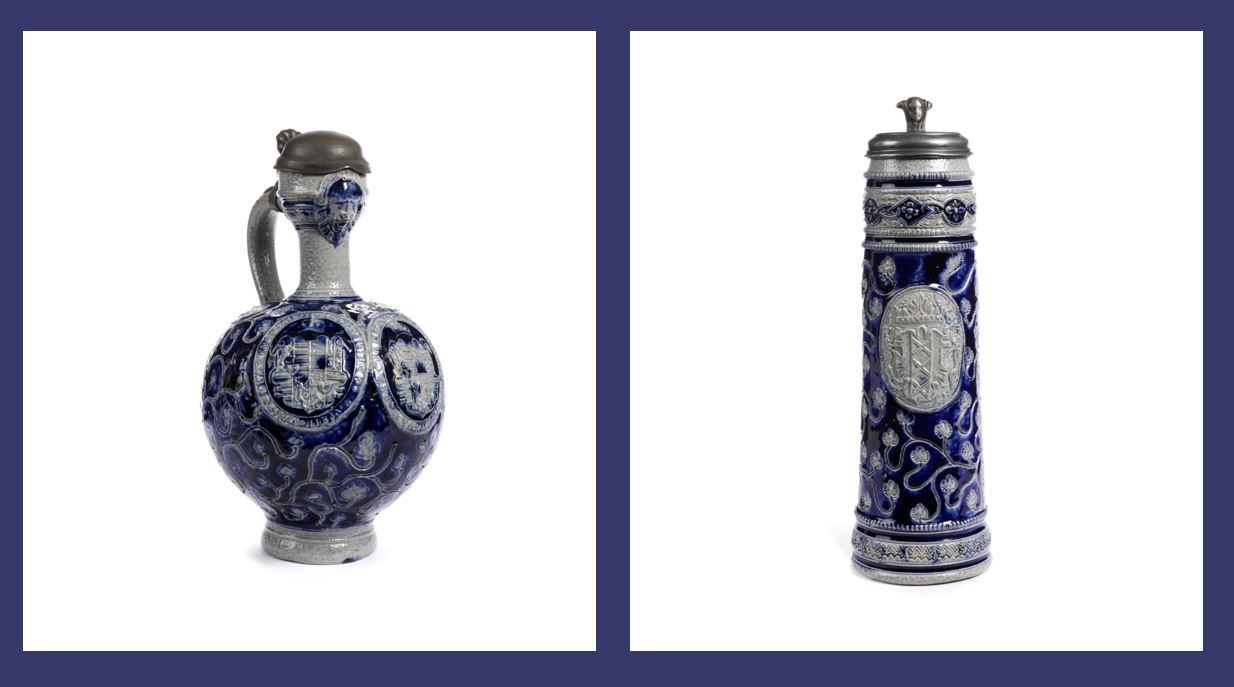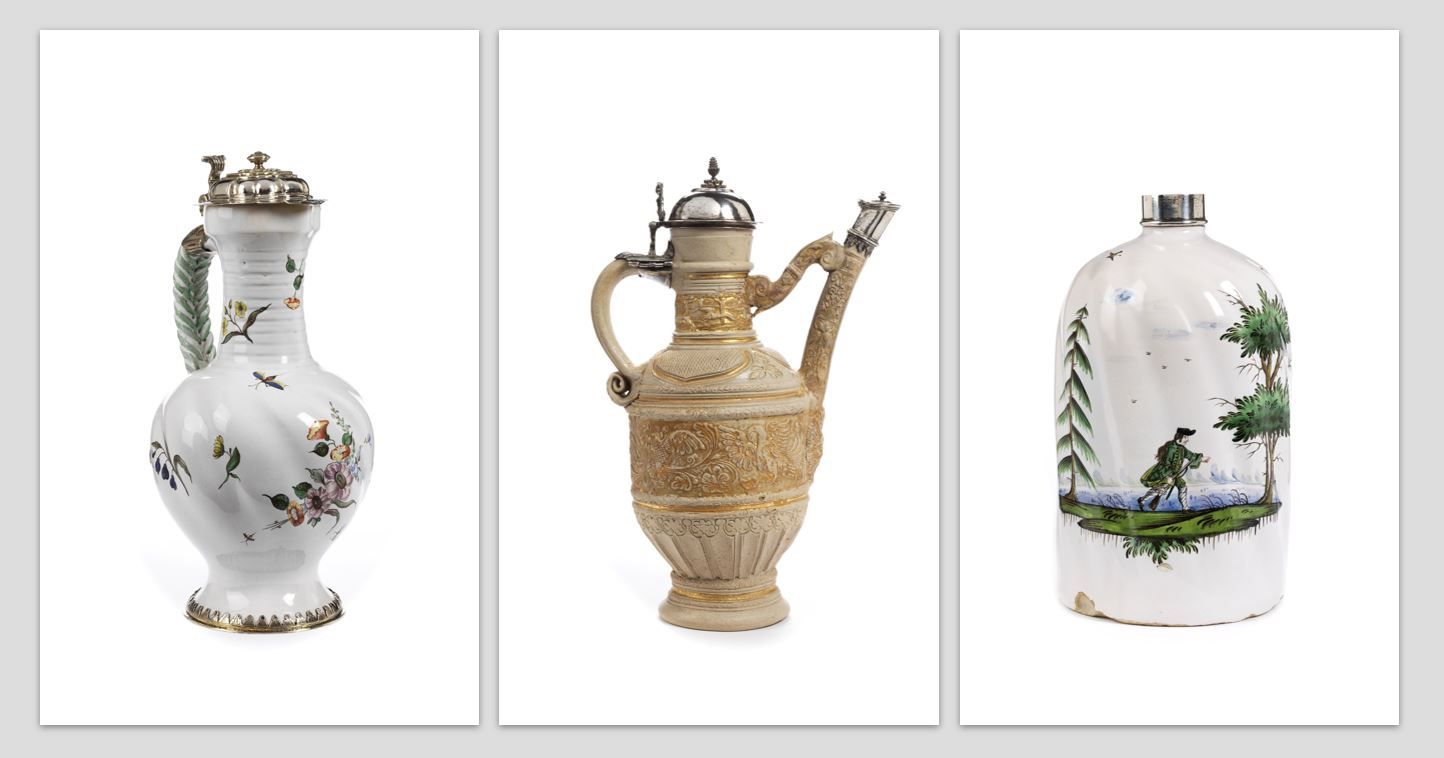16th century Nuremberg Preuning Hafnerware
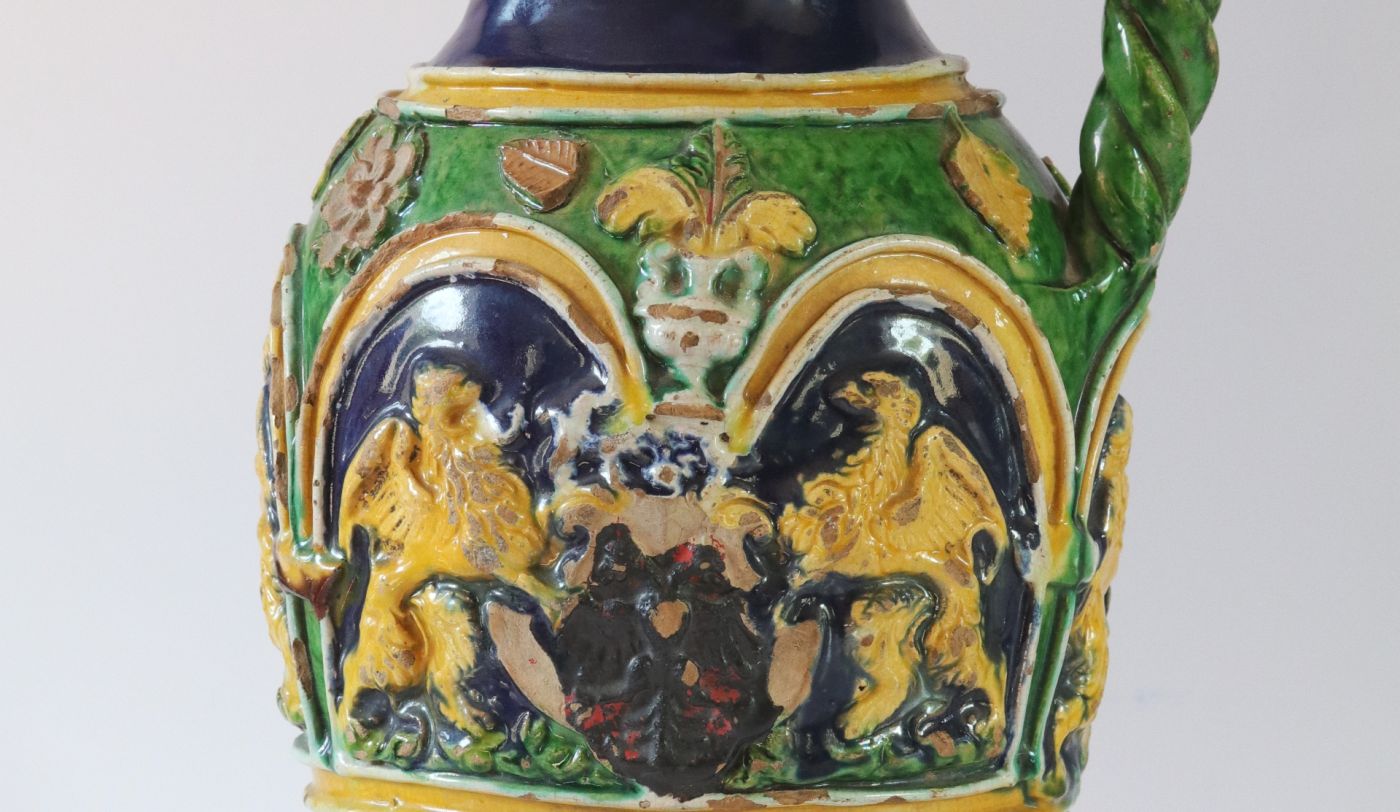
Nürnberger Hafnerkrug um 1560
Werkstatt von Paul Preuning
Mit dem Namen des Nürnberger Hafnermeisters Paul Preuning ist eines der faszinierendsten Gebiete der frühen deutschen Keramik verbunden: Die bunte, reliefverzierte Hafnerkeramik der Renaissance. Es handelt sich um eine Gefäßgruppe, von der nicht mehr als etwa 50 Stücke erhalten sind; fast ausschließlich sind es Krüge. Diese Gefäße sind durch aufgelegte, zumeist waagrecht oder in Bögen oder Spiralen verlaufende, weißglasierte Rundbänder in Zonen und Segmente eingeteilt, die den Gefäßaufbau betonen, das Dekor ordnen, aber auch selbst ein markantes Dekorelement darstellen. In die dadurch entstandenen Flächen sind mit Hilfe von Modeln hergestellte Reliefs aufgelegt: figurale, florale und architektonische Motive. Von den meisten Modeln existieren unterschiedliche Größenformate.
Die farbigen Zinn- und Bleiglasuren, die den Gefäßen in Verbindung mit dem plastischen Dekor ihren unverwechselbaren Charakter verleihen. Grün, Blau, Gelb und Manganbraun herrschen in den Flächen vor; Weiß akzentuiert die Dekorauflagen. Nur wenige Krüge haben keine waagrechte Zoneneinteilung. Hier umspielen die weißen Rundbänder bogenförmig die Reliefauflagen. Selten sind große Krüge ohne jede Zoneneinteilung. Für die Entstehung dieser Keramik sind verschiedene Einflüsse anzunehmen. Ausgangspunkt war sicherlich die österreichische und süddeutsche Ofenhafnerei, die die Dekoration von Kacheln mit Reliefs und Nischen bereits am Ende des 15. Jahrhunderts hoch entwickelt hatte. Gleiches gilt für die Verwendung farbiger Bleiglasuren, die eine leuchtende Buntheit in die Keramikdekoration brachte.
Manfred Brauneck, Krüge der Nürnberger Preuning Werkstatt S. 1502 ff (Quelle siehe Literatur)
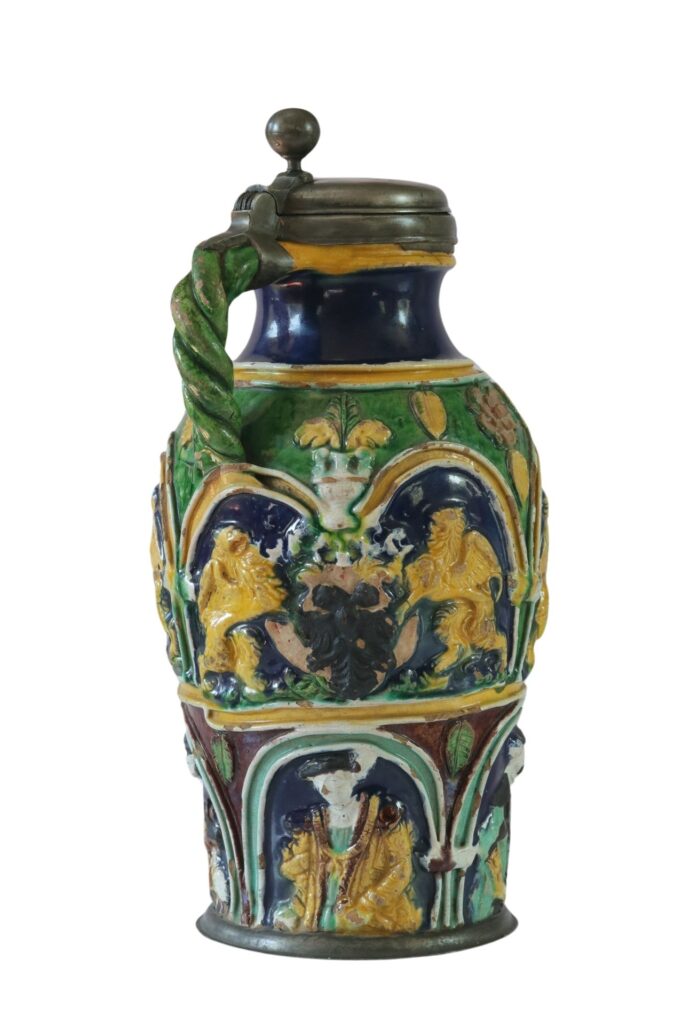
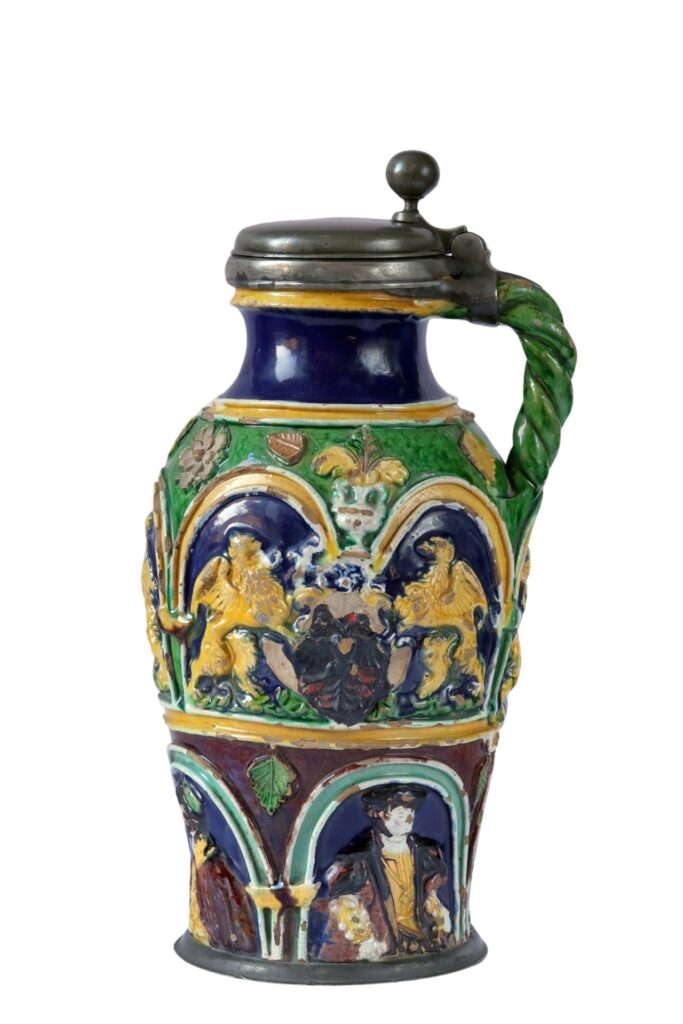
The workshop of the Nuremberg potter Paul Preuning is associated with one of the most fascinating genres of early German ceramics: the polychrome, lead-glazed, relief-decorated hafnerware (earthenware) of the Renaissance.
This is a group of objecs of which no more than around 50 have survived till our times, almost all of which are jugs. These vessels are divided into segments and divisions by white-glazed circular bands, usually applied horizontally or in arcs or spirals, which emphasise the object`s structure, organise the decoration and also represent a distinctive decorative element. Reliefs made with the help of moulds are applied to the resulting areas: figural, floral and architectural motifs. Most of the moulds came in different sizes.
The polychrome lead glaze in conjunction with the sculptural decoration ad to the unique character of the hafnerware objects of the Preuning workshop. Green, blue, yellow and manganese brown predominate in the surfaces; white accentuates the decorative overlays. Only a few jugs have no horizontal divisions. Here, the white circular bands frame the relief overlays in an arc. Large jugs without any divisions are rare.
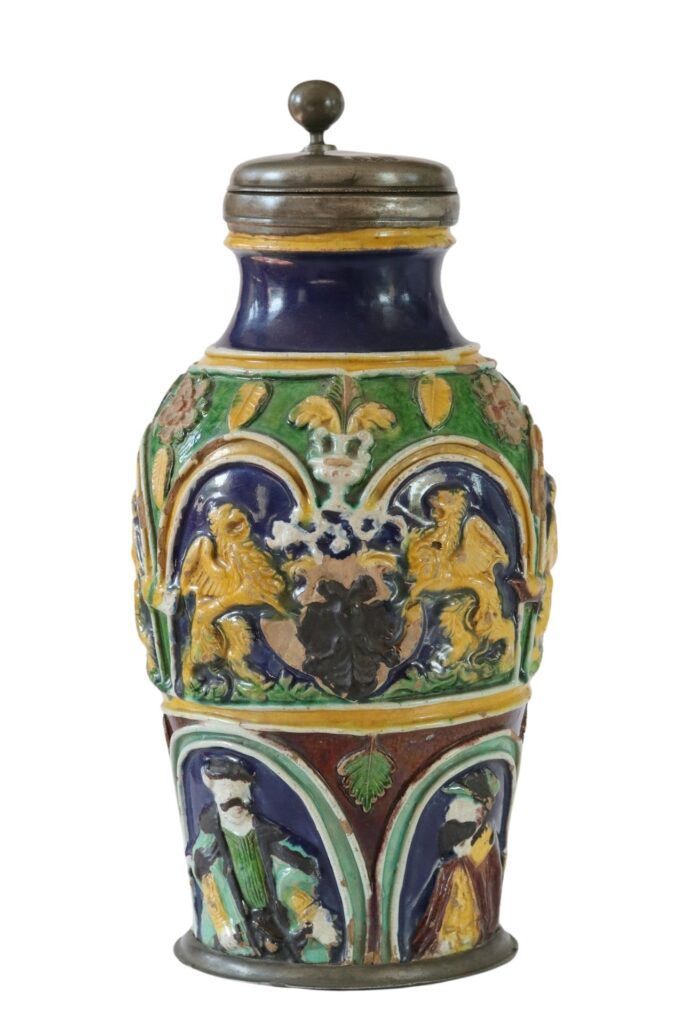
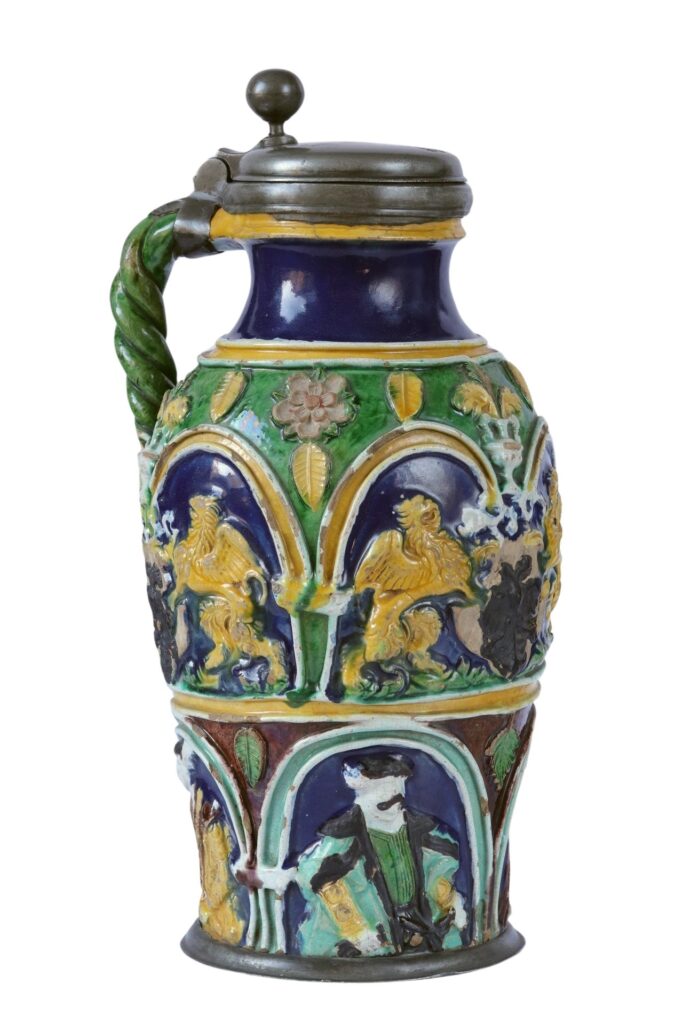
Lead-glazed earthenware Circa 1560 Workshop of Paul Preuning, Nuremberg.
Oviform body with a twisted handle, decorated in moulded relief across three bands, divided by white tin-glazed cables.
The workshop of Paul Preuning was located outside of Nuremberg and emerged in the 1540s. The golden Age of Nurmeberg as an artistic center of the German Renaissance. The techniques used developed out of the Hafnerware tradition of pottery stove tiles. Preuning’s objecst are characterized by bright glazes, relief moulds, and geometric banded designs. The production lasted for around fifty years and were made largely for a local market. Unlike stoneware they were not widely exported and do not survive in large numbers.
Various influences can be assumed for the creation of this pottery. The starting point was certainly Austrian and southern German kiln tiles, which had already highly developed the decoration with reliefs by the end of the 15th century. The same applies to the use of coloured lead glazes, which brought a vibrant colourfulness to decoration of the ceramics.
Reference Objects Collection Peter Vogt
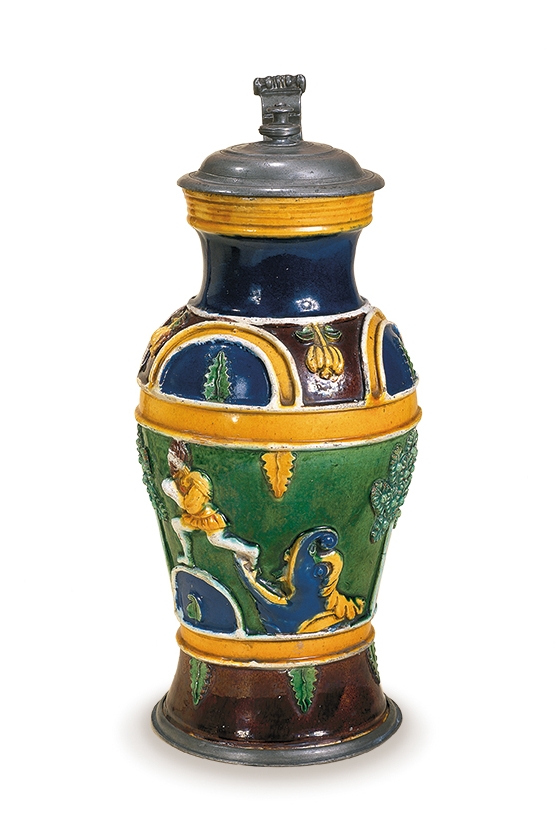
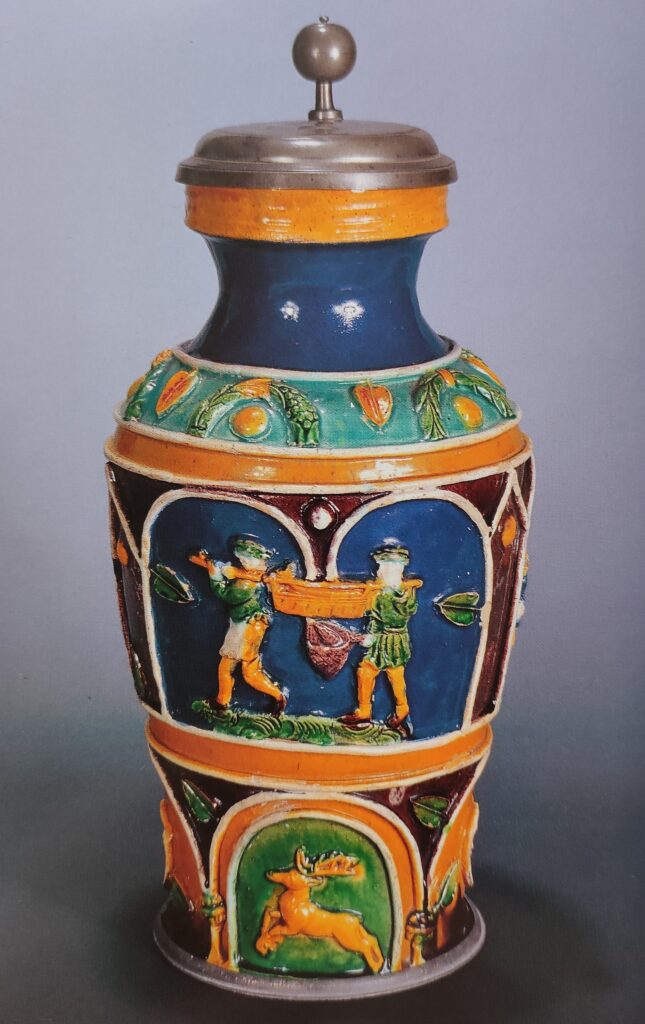
Museum Reference Object
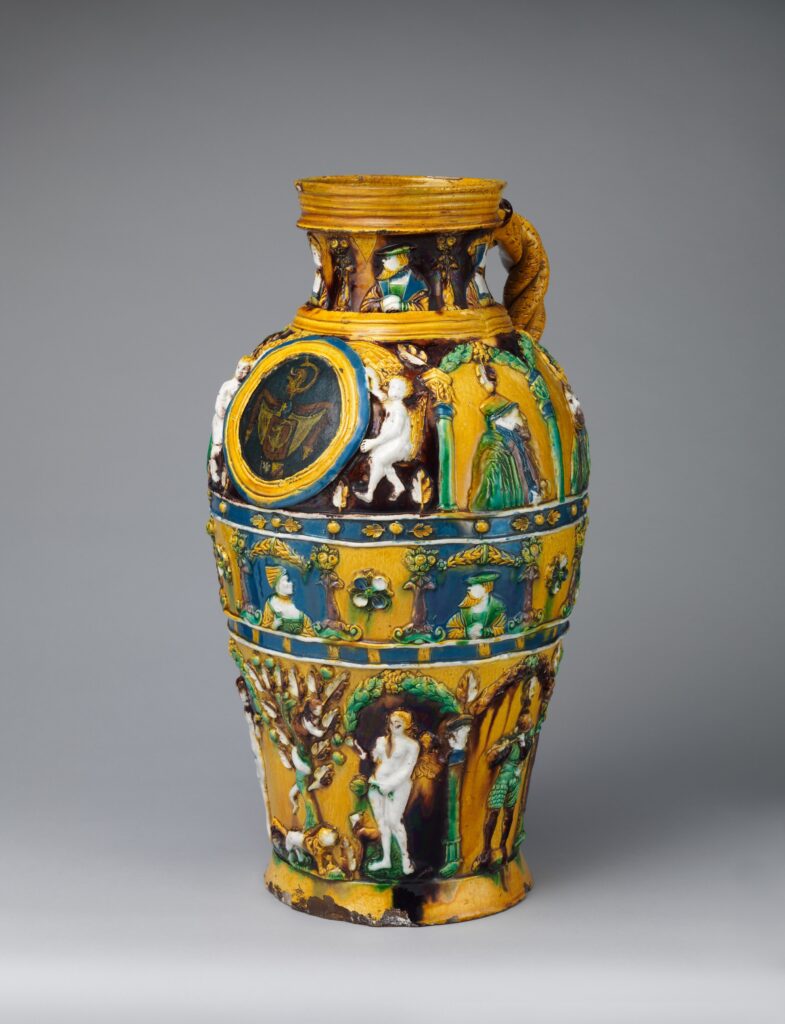
Metropolitan Museum New York
Jug with portraits of Emperor Charles V (1500–1558) and Johann Friedrich the Magnanimous (1503–1554), elector of Saxony
Workshop of Paul Preuning Nuremberg Germany
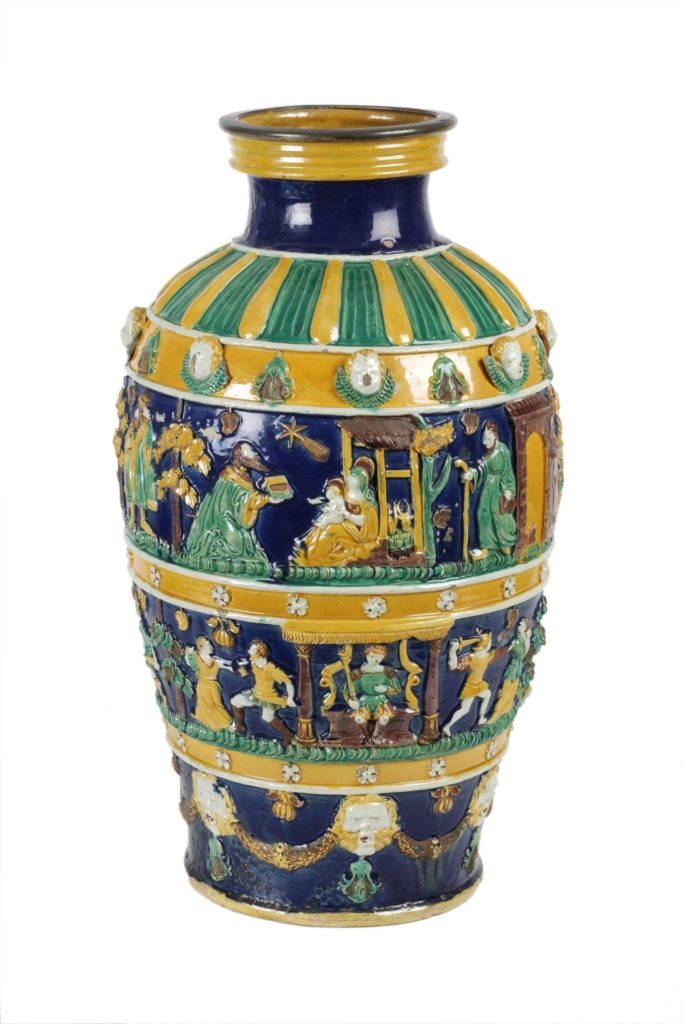
Victoria and Albert Museum, London
Hafnerware Jug workshop of Paul Preuning of Nuremberg about 1545-55.
It is typical of the brightly-coloured lead-glazed wares decorated with applied moulded relief decoration which were produced at Preuning’s pottery outside the Tiergarten Gate of Nuremberg from the mid-1540s for at most fifty years.
The distinctive style of Preuning’s pots derives from the traditional local manufacture of stove tiles. Bright polychrome glazes were introduced from about 1500 and in the 16th century were added relief mouldings after engraved designs and niches containing modelled figures. https://collections.vam.ac.uk/item/O117410/jug-preuning-paul/
Related Articles:
Literature
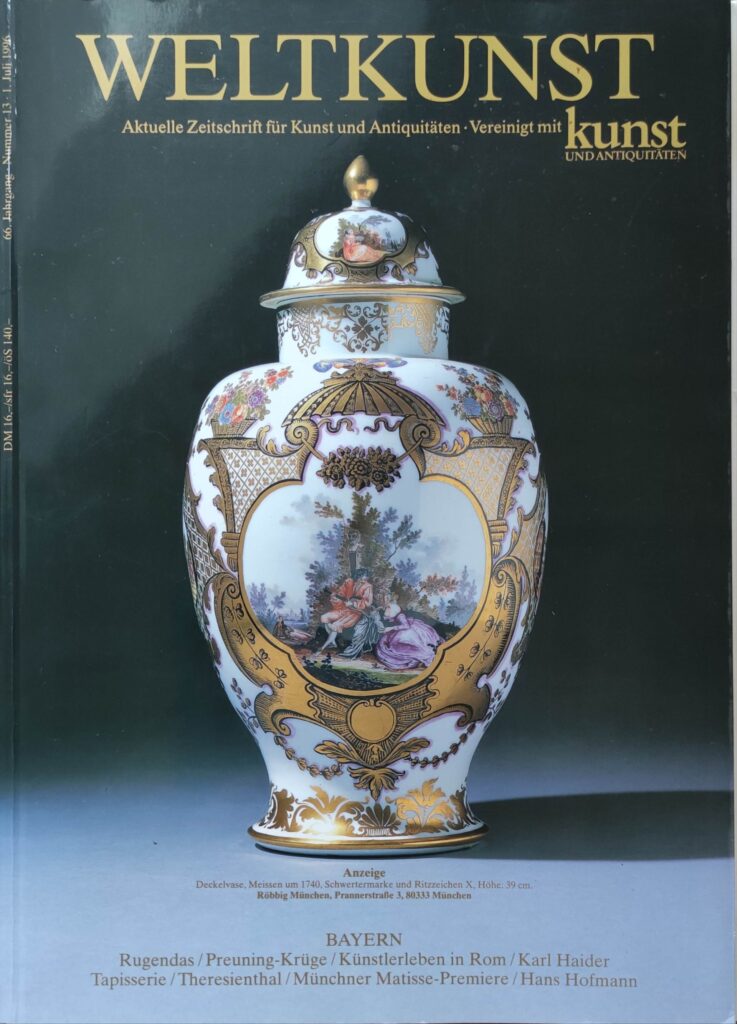
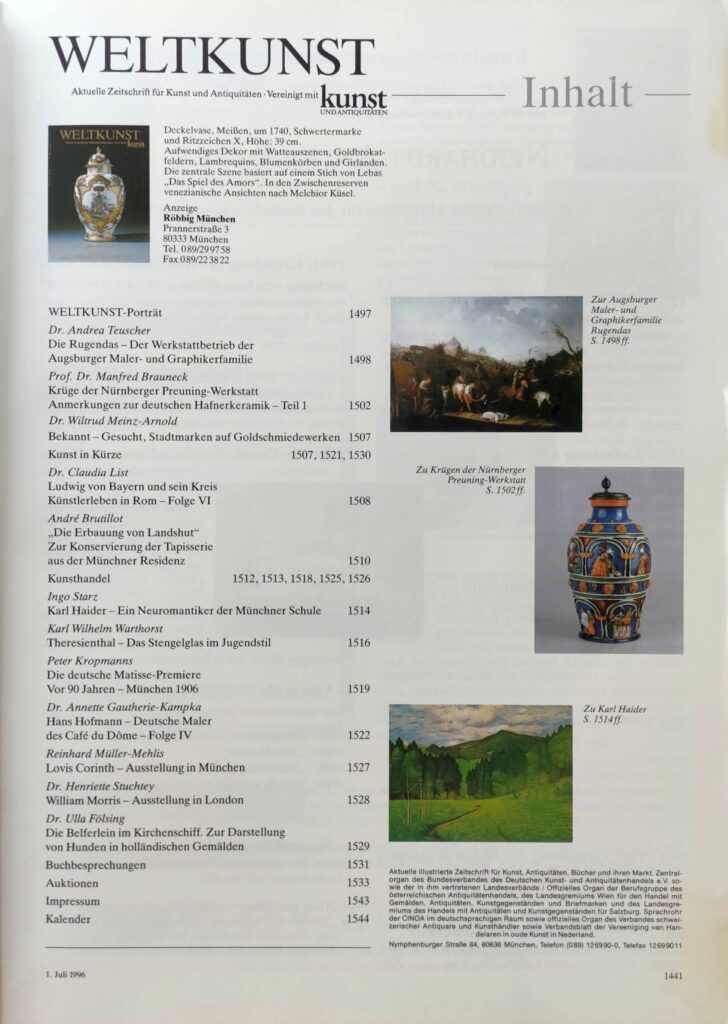
Die Weltkunst. 66. Jahrgang (1996) Nummer 13, Manfred Brauneck, Krüge der Nürnberger Preuning Werkstatt S. 1502 ff.
A. Walcher von Molthein: Arbeiten der Nürnberger Hafnerfamilie Preuning. Kunst und Kunsthandwerk VIII (1905), S.134-142;
K. Strauß: Beiträge zur Hafnerkeramik der deutschen Renaissance. In: Belvedere 9. (1930), S. 133-136
O. v. Falke: Majolika. Berlin 1907, 3 198 ff
